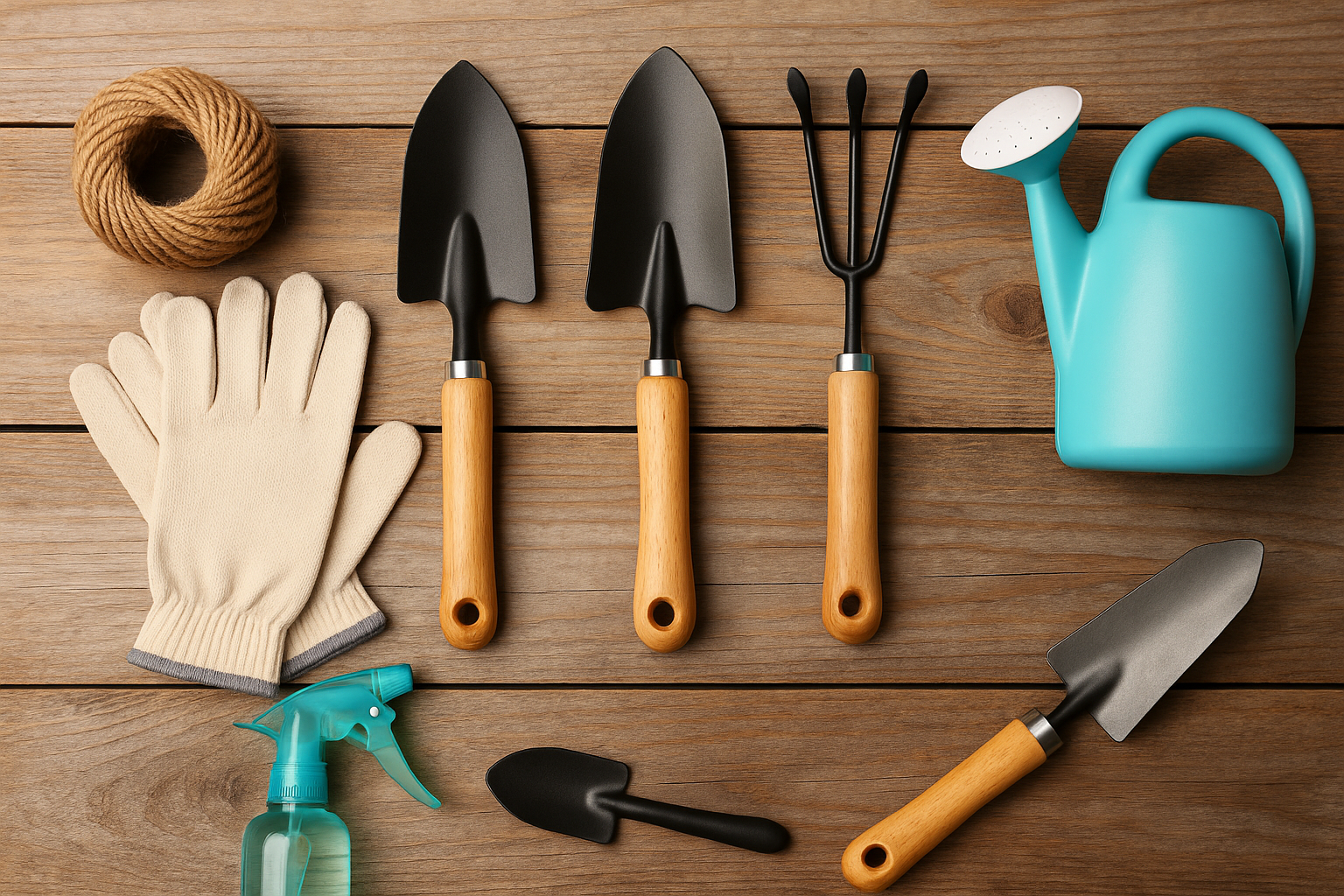Starting a garden is an exciting journey, and having the right tools can make the experience much smoother and more enjoyable. You don’t need a garage full of gear to begin—just a handful of essential tools tailored to basic gardening needs. In this guide, we’ll explore the must-have gardening tools for beginners and how to use each one effectively.
Why You Need Gardening Tools
Gardening tools aren’t just for professionals. They help you:
- Work more efficiently
- Avoid damaging your plants
- Reduce physical strain
- Maintain a neat and healthy garden
With the right tools, even a beginner can feel like a seasoned gardener.
Tool #1: Hand Trowel
A hand trowel is one of the most versatile tools in any gardener’s kit. It’s perfect for digging holes, transplanting seedlings, removing weeds, and mixing soil.
- Material: Choose a trowel with a sturdy stainless steel blade
- Handle: Ergonomic, non-slip handles are more comfortable
- Tip: Look for a pointed tip for easier soil penetration
Tool #2: Pruning Shears (Secateurs)
Pruning shears are essential for trimming plants, removing dead growth, and encouraging healthy development. A sharp, high-quality pair makes the job quick and precise.
- Use: Ideal for cutting stems, branches, and flowers
- Types: Bypass shears for live plants; anvil shears for dead wood
- Care: Keep blades clean and sharpened to extend their life
Tool #3: Watering Can or Hose
Watering is a daily part of gardening, so the right watering equipment is crucial. Choose based on your garden size and plant needs.
- Can: Great for small spaces or indoor gardening
- Hose: Better for larger outdoor areas
- Feature: Opt for a can with a detachable rose (spout) for adjustable flow
Tool #4: Gardening Gloves
Protect your hands from cuts, blisters, thorns, and dirt with a good pair of gardening gloves.
- Material: Look for breathable fabric with waterproof palms
- Fit: Gloves should be snug but not tight
- Extra: Long-cuffed gloves offer added protection for pruning
Tool #5: Garden Fork
A garden fork is perfect for turning and aerating soil, especially in compacted garden beds. It can also help with mixing compost or removing weeds.
- Material: Steel tines are stronger and last longer
- Size: Hand forks are ideal for containers, while full-size forks suit garden beds
- Grip: Comfortable, rubberized handles are best
Tool #6: Garden Spade
This square-bladed shovel is used for digging, edging, lifting sod, and moving soil. A durable spade is a great long-term investment.
- Blade: Stainless steel resists rust
- Handle: D-shaped handles give better grip and control
- Tip: Keep it clean and dry to prolong lifespan
Tool #7: Garden Rake
A rake helps you clear leaves, spread mulch, and level soil. It’s a cleanup tool that keeps your garden tidy.
- Types: Leaf rakes for gathering debris; bow rakes for soil work
- Size: Choose based on garden size
- Material: Lightweight aluminum or steel are easy to handle
Tool #8: Spray Bottle or Mister
Especially useful for houseplants and seedlings, spray bottles help maintain humidity and give a gentle watering.
- Use: Great for delicate foliage
- Feature: Adjustable nozzles for mist or stream
- Care: Rinse regularly to prevent clogging
Tool #9: Wheelbarrow or Garden Cart
If you’re working in a larger area, a wheelbarrow makes moving soil, compost, or plants much easier.
- Size: Choose based on your strength and space
- Material: Plastic is lighter, while steel is more durable
- Tip: Keep tires inflated and clean after each use
Tool #10: Soil Tester Kit (Optional)
For those who want to get serious, a soil tester measures pH and nutrient levels. This helps you choose the right plants and fertilizers.
- Use: Insert probe into moist soil and wait for reading
- Types: Analog or digital options available
- Benefit: Informs better gardening decisions
Budget-Friendly Tips for Beginners
Starting a garden doesn’t have to be expensive. Here’s how to save:
- Buy secondhand tools from thrift stores or online marketplaces
- Start with a basic kit and expand over time
- Join community gardening groups where tools are shared
- Repurpose household items, like old kitchen spoons or yogurt containers
Organizing and Storing Your Tools
Proper tool care extends their life and keeps your garden running smoothly:
- Clean tools after each use to prevent rust and disease
- Store in a dry area like a shed or toolbox
- Hang tools on hooks or pegboards to save space
- Oil moving parts like shears to keep them functioning
Building Your Own Gardening Kit
You don’t need to buy everything at once. Start with the essentials:
- Hand trowel
- Gloves
- Pruning shears
- Watering can
- Spade
As your garden grows, so can your toolkit.
Empower Your Gardening Journey
Having the right tools at your side makes gardening more efficient, more enjoyable, and more rewarding. Even the simplest tools can open the door to a lush, thriving garden. Invest in quality, take care of your gear, and most importantly—enjoy every moment you spend digging in the dirt.

